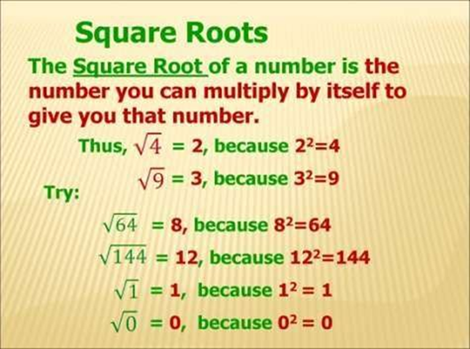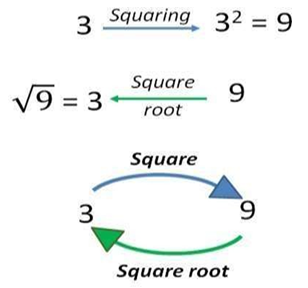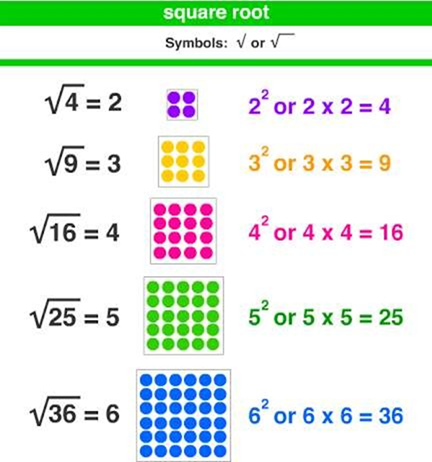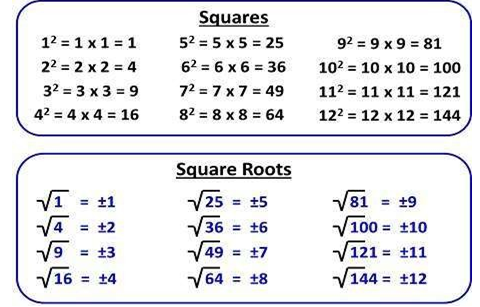LEARN MATH STEP BY STEP THROUGH VERY EASY PROCESS
CLASS-7
SQUARE ROOTS
SQUARE ROOTS -
A square root of a number is a value that, when multiplied by itself, gives the original number. It’s denoted as √a, where a is the number you're finding the square root of.
For example:-
- √9 = 3 because 3 × 3 = 9
- √16 = 4 because 4 × 4 = 16
If the number is not a perfect square (like 2, 5, or 7), the square root will be an irrational number, meaning it can't be expressed as an exact fraction and has an infinite number of decimal places.
A square root of a number is a value that, when multiplied by itself, gives the original number. It is represented using the radical symbol (√).
For example:-
- The square root of 100 is 10 because 10 × 10 = 100.
- The square root of 121 is 11 because 11 × 11 = 121.
- The square root of 144 is 12 because 12 × 12 = 144.


Some Key Points About Square Roots:-
- Every positive number has two square roots: one positive and one negative. (e.g., √9 = 3 and −√9 = −3).
- The square root of 0 is 0.
- Most non-perfect squares have irrational square roots (e.g., √2 ≈ 1.414, which never ends or repeats).

A square root of a number x is a value that, when multiplied by itself, gives x. It is denoted as √x. For example:
- √625 = 25 because 25 × 25 = 625.
- √169 = 13 because 13 × 13 = 169.
- √2 ≈ 1.414 (since 2 is not a perfect square, its square root is an irrational number).
